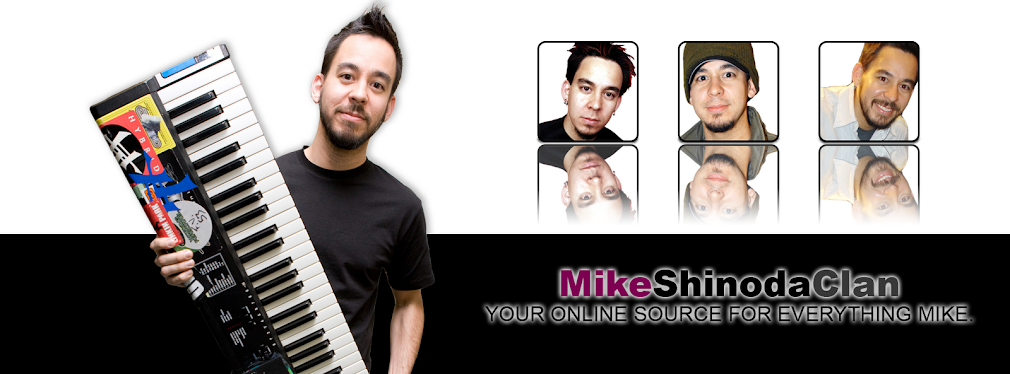Friday, February 11, 2005
Linkin Park's Mike Shinoda Critiques Fame in an Art Show at JANM
July 2oo8
Mike Shinoda, the MC and musician for the Grammy-winning alternative band Linkin Park, has an exhibit of paintings and digital works at the Japanese American National Museum through Aug. 3. In Glorious Excess (Born), the musician/producer/artist critiques society’s obsession with fame. His symbolic paintings pay homage to vanitas still life painting, popular with Northern European artists in the 16th and 17th centuries.
Shinoda graduated from Art Center College of Design in 1998 with a degree in illustration. He is involved with a number of charitable causes, and proceeds from sales of his art and other merchandise at the JANM show will go to the museum and a scholarship in his name at his alma mater.
Shinoda was inspired by a JANM exhibit to interview family members, including his father and aunt, about their internment during World War II. He then wrote the song “Kenji” for his alternative hip-hop band Fort Minor.
Los Angeles Downtown News: How did you get the idea to combine social commentary with centuries-old vanitas painting?
Mike Shinoda: I had a couple of these paintings started, and I showed them to my brother and he said, “Oh, you know what this reminds me of is those vanitas paintings.” It’s actually funny that he recognized that before I did because I took a whole bunch of art history in school.... A lot of the symbols from the vanitas paintings - which included skulls and time and smoke and bubbles, which were all meant to reference the ephemeral nature of life - were already showing up in the paintings: smoke from a cigar, bubbles in champagne, expensive watches and things like that. I was making these paintings as kind of fun, cheeky pop commentary, and that’s what it initially started pointing towards. The series actually follows a skeleton character who experiences different versions of fame even though he doesn’t have a talent for anything.
Q: Do you consider yourself an outsider in celebrity culture?
A: In the show, there [is a piece] that I think represents how I feel when I’m at, let’s say, a red carpet award event. It’s actually up on my website [mikeshinoda.com] now. It’s a video I did called “Sirens and Silence.” One thing that is pretty apparent and that I do feel when I’m at these events is that I don’t really relate in a lot of ways to many of the people that go. Our band writes, plays and performs music because that’s what we love to do. We’ve always loved to play music and that is the endgame for us - it’s not something to get us another thing, be it fame or money or girls or whatever.
Q: How did you end up doing both art and music?
A: When I started out, the art was going to be my full-time job, and I planned on getting into graphic design and illustration to pay the bills. It’s something that I’ve done since I was a little kid, and I was just playing music on the side as a hobby. Then probably just about the time that I graduated college, those two things flip-flopped, and we got signed to Warner Bros. Records and put out Hybrid Theory. So these days the painting gets to be something that I don’t have a boss, I don’t have an employer who art directs the pieces, tells me what to do. I just paint what I want to paint, say what I want to say and find a gallery that’s interested in showing the stuff.
Q: Did JANM approach you about exhibiting there?
A: [Art Director] Clement Hanami really wants to bring in some of the more youthful art culture that he enjoys, and he was definitely a key player in getting me over to the museum.... I have to say one of the things that really stood out to me about the museum has been their exhibit upstairs about the Issei and Nisei and the internment. That presentation is incredible. If anybody asks me what the top 10 things to do in L.A. are, if there is any chance I think they would be interested in that, I always put it near the top of the list, because it’s just something so powerful and it’s actually a story that a lot of people don’t get to hear. You go in and see things like one of the barracks that they used in the internment rebuilt inside the building. If people are there to see my art show, then I hope they will go upstairs and check that out as well.
Japanese American National Museum, 369 E. First St., (213) 625-0414 or janm.org.
thanks to lptimes.com













0 comments:
Post a Comment